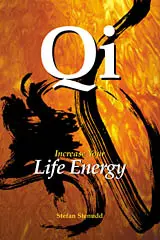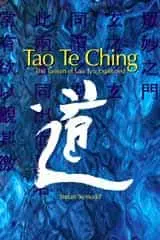|
Qi Energy Exercises
|
Settings for Qi Energy ExercisesWhat to think of when working on your Qi (Chi) energy flow Nature is the best setting for qi exercises.
Nature is the best setting for qi exercises.
But if you do have the opportunity, they are the ideal settings for promoting the very best result of your exercises. I would like you to keep them in the back of your mind, so that you at least adapt to those things that do not cause too much trouble. You will soon be aware of what details play the most important role in how successful you regard the exercises to be. You should carefully adjust to those circumstances, and the rest you can leave as is.
PlaceOf course, a peaceful environment where you are alone and can concentrate on your exercises without interruptions, is the very best place for you to be when doing them. This usually means that you isolate yourself somewhat – indoors in a room that others do not visit, or outdoors on a spot that others do not pass.Noise is not beneficial, to put it mildly. That goes for visual noise, too – such as flashing lights, lots of movement, or any other muddle of impressions. All the senses should have as peaceful a setting as possible. I am not much for such decorations as incense and soft music – they are widely surpassed by fresh air and silence. A room with stale air, or full of ever so exotic scents, is noise for the nose. Music, independent of the composer’s genius, is distracting. You will have a hard time listening to what happens inside yourself. Nature is no doubt the best environment for anything spiritual, although it is never completely silent or still. If you want to flow of life energy, nothing stimulates you more than having lush meadows as your floor and the sky as your ceiling. Still, it can be difficult to find a good spot for your exercises outdoors. You need a place that is not too moist for standing, sitting and lying down, where neither people nor insects bug you, when you have gotten started. Just knowing that you might get disturbed is a distraction. If so, you had better settle with an indoors environment, although it is less inspiring. It is easier for you to control, so that you can concentrate on your exercises. You may need that, particularly when you are beginning to familiarize yourself with them.
TimeThere is really no way of determining what is a suitable time for doing the exercises of this book. Several of them are such that they can easily and quickly be done any time of day. However, to avoid a distracted mind it is favorable to have a time distinctly reserved for the exercises – not one when a visitor or a phone call is expected soon. Nor should you try to make use of a minute or two between one busy moment and another.The important thing is not to have plenty of time, but to be able to focus fully on the exercises, no matter how tight your schedule is. If you manage to do an exercise in the elevator ride between one crucial meeting and another, then go right ahead. If not, choose your moments more carefully.
You should not think that you need loads of free time, so that you can work on your exercises for hours. That will only lead to your doing them rarely. Repetition is much more important than length of time. Five minutes a day give much more than three hours once a week. Unfortunately, I have the impression that repetition at regular intervals is what people find the hardest to accomplish. We are forced to fill our lives with so many annoying and boring habits that we are very reluctant to introduce new ones, no matter how rewarding they are. Make a commitment, order yourself to spend a little time each day for the exercises. If you do not decide firmly, it will probably not happen. No lifetime contract is needed. Very few people can honor something for that long, whatever the terms or rewards are, so there is no point in making that kind of commitment. But surely you can give it a week? And if that works fine, try another week, and then another. When you commence with these exercises you will need about an hour if you want to go through them all. But soon enough you will find that you get meaningful results from just five minutes, or even less than that. Make a selection of the exercises that give you the most. Of course, that may vary from one time to another, according to your needs and your progress. If you have some self-discipline in establishing these habits, you will notice that they take almost no time at all from your days. The exercises sneak so naturally into your daily rhythm, you stop feeling that they interrupt it. They become one with your everyday life. When you decide on a suitable time of day for your new habits, there is just one guiding line to follow: Find a time when you have the best chance of doing them peacefully for a while. It can be in the morning, right after breakfast, on your lunch break if you find some privacy, or at night in your bedroom. You know best. It does not have to be the same time every day, although there is a risk of forgetting your exercises completely if you do not have a fixed schedule for them. Days may pass, when you simply forget. So, I recommend that you stick to a certain time of day – at lest in the beginning. On a day when you are unable to exercise at that precise time, choose another – for that day only – and return to your regular schedule the next day. If you feel that doing the exercises daily is far too much, also during the first week – then decide for another interval that you can live with. Maybe every Sunday morning? If you cannot put aside time for the exercises even once a week, I doubt that there is much point in doing them at all. In that case, let the book stay on the shelf. That being said, if you have had an intense initial period of exercises, and they have corrected your posture, opened your belly breathing, and started your qi flow – then it may be enough for you to check yourself by doing a few of the exercises once a week, or maybe just once a month. Finally, it may suffice to do them just a couple of times a year, like when the clock adjusts to Daylight Saving Time, and back again half a year later. Maybe just the morning of each New Year’s Day.
Dress We have a habit of wearing clothes that are sometimes strikingly similar to nooses on the body – a belt tightened on the waist, a necktie threatening the breathing, shoes that squeeze the feet, sturdy jeans that carve into the crotch, wristwatches restraining the movement of the wrist, and so on.
We have a habit of wearing clothes that are sometimes strikingly similar to nooses on the body – a belt tightened on the waist, a necktie threatening the breathing, shoes that squeeze the feet, sturdy jeans that carve into the crotch, wristwatches restraining the movement of the wrist, and so on.That is hardly good for any of the body’s inner flows, so it is particularly unsuitable when you want to do the exercises of this book. The bodily flows are mainly vertical, and our clothes tend to tighten the body on horizontal lines, so they do indeed become obstacles. When engaging in these exercises, you need to have loose clothing, and as few garments as possible. No doubt, the best is to be completely nude. Try it sometime, and you will notice how immensely liberating that is to the body. Even seemingly marginal clothing, like socks or silky soft panties, inhibits the body flows to some extent. That may be so minute, you hardly notice it when you exercise – but it is an obstacle, nonetheless. If you can exercise naked, then do it, at least occasionally. Make sure to try it when you begin to learn this, especially when you exercise relaxation and breathing. Otherwise, be as lightly dressed as possible, and use clothes that are loose and soft. Really, the only ideal clothing is the one we were all born with.
Qi Energy Exercises
Qi Exercise Settings
Qi Energy Breathing
Qi Posture
Qi Relaxation
Qi Extension
Qi Centering
The Book
My Books About Life EnergyHere are the two books I have written on the subject of life energy. This website contains some of the material from the first one. Click the image to see the book at Amazon (paid link).
About CookiesMy Other WebsitesLife EnergyThe many life force beliefs all over the world, ancient and modern, explained.
TaoisticTaoism, the old Chinese philosophy of life, based on Tao, the Way. Also, the complete Tao Te Ching translated and explained.
AikidoAikido, the peaceful martial art. Its basics, principles, techniques, and more — in texts, images and videos.
I Ching OnlineThe 64 hexagrams of the Chinese classic I Ching and what they mean in divination. Free online reading.
Other Books by MeClick the image to see the book at Amazon (paid link).

Stefan StenuddAbout Me I'm a Swedish author and aikido instructor. I've written several books about aikido, qi energy and other life force concepts. I'm also an historian of ideas, researching the thought patterns in creation myths. Click the image to get to my personal website. Contact
|
 Qi — Increase Your Life Energy
Qi — Increase Your Life Energy In the beginning you may find it tricky to get suitable pauses in your regular life. But soon enough you will notice that your tolerance increases, so that you can do the exercises in not so ideal situations. Maybe you will even be able to use that elevator ride – at least for some of the swifter exercises.
In the beginning you may find it tricky to get suitable pauses in your regular life. But soon enough you will notice that your tolerance increases, so that you can do the exercises in not so ideal situations. Maybe you will even be able to use that elevator ride – at least for some of the swifter exercises.


